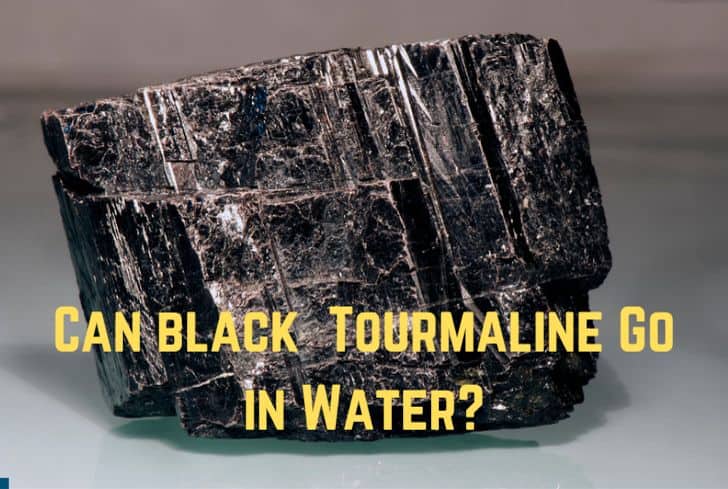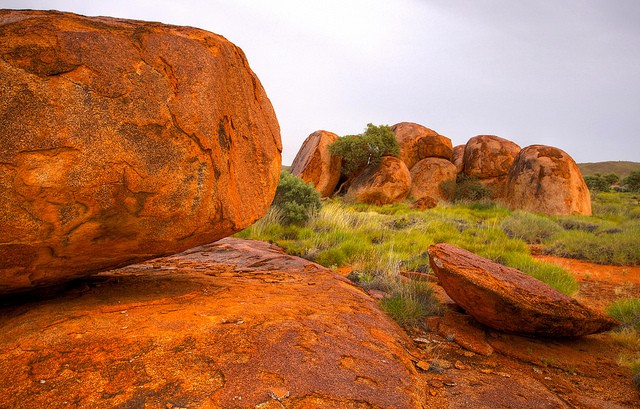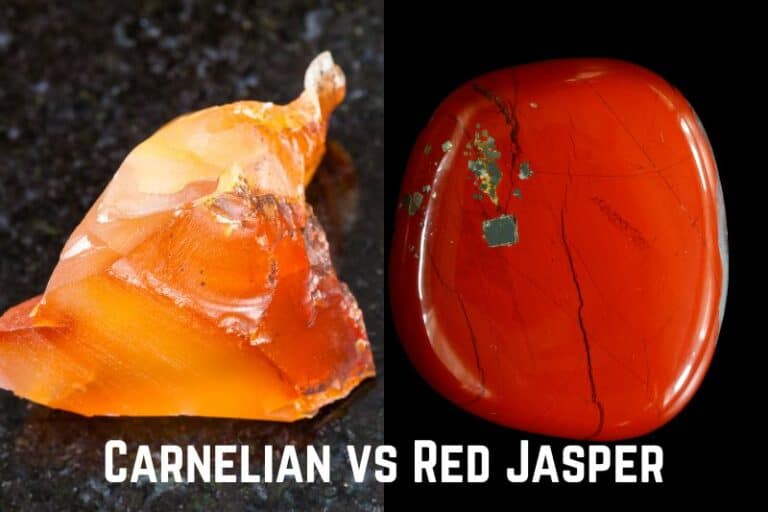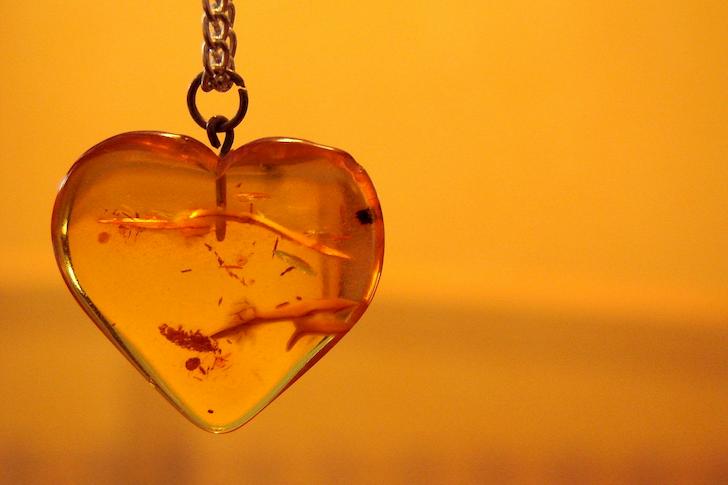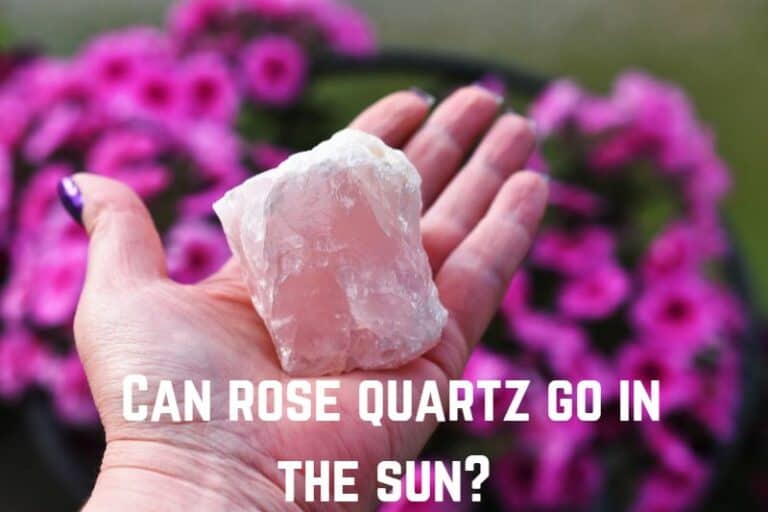Can Hematite Go in the Water? (And Sun?)
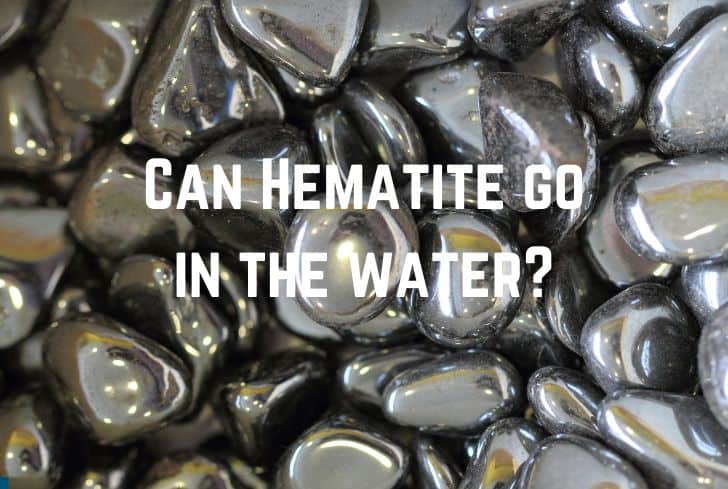
Hematite is an iron oxide having the formula Fe2O3. It is one of the most abundant minerals on Earth and is mined as an ore of iron. It is also used as a pigment, a minor gemstone, and for several other purposes. Earlier it was mined at locations all around the world, but now its mining takes place only in a few places such as China, Brazil, Australia, etc.
Have you ever wondered if hematite can go in the water? In this article, we are going to discuss just that. We will begin by looking at the properties of hematite. Then we will talk about its interaction with various elements. Finally, we will discuss the proper identification and cleaning of hematite.
Read: Can Citrine go in the Water?
Can Hematite Get Wet?
No, it is not recommended to put hematite in water. Hematite has a value of 5.0 on the Mohs Hardness Scale, which is less than the value required for minerals to go underwater. Putting softer stones in water is risky, and even harder stones should not be immersed for long as the water can damage their structure and tarnish their appearance.
Mohs Hardness Scale is a measure of the relative resistance of a mineral to scratching. It also indicates a stone’s relationship to water. Usually, a value above 5.0 means that the mineral can go into the water.
Softer stones like hematite should not be immersed in water. Water enters the crevices of the stone and widens the cracks. These fissures may not be apparent at first but can slowly damage the structure of the stone, making it brittle and or even breaking it.
Water also tarnishes the appearance of the stone. It strips off the polish of the stone, making them look duller. By encouraging fissures, water can also change the way light bounces inside the stone. This can permanently damage its optical properties, reducing its beauty and value.
What are the Properties of Hematite?
These are the properties of hematite:
- Appearance: Hematite has an incredibly variable appearance. Its colours can range from red to black to silver. Its lustre is also not consistent; it can be earthly, submetallic, or metallic. But despite the variations in other features, hematite always leaves a reddish streak, which is what allows its identification. In terms of diaphaneity, hematite is opaque.
- Structure and Composition: Hematite occurs in many forms such as massive, crystalline, fibrous, etc. It has a trigonal crystal system, the same as corundum and ilmenite. Its crystals belong to the rhombohedral lattice system. Hematite has 70% iron and 30% oxygen by weight, although it is rarely found in that pure composition. Sedimentation usually adds clay minerals, silica, or shale to the iron oxide.
- Hardness: Hematite has a value of 5.0 on the Mohs Hardness Scale. This means that it is a rather soft mineral and cannot be immersed in water. However, it is still used as a minor gem material in the form of cabochons, beads, tumbled stones, etc. Usually, the specimens used are silver-coloured hematite having a uniform texture. The bright silver colour and weighty feel of hematite make it a popular tumbled stone.
- Magnetic Properties: Hematite is not magnetic. But, sometimes, the specimen might contain enough magnetite that makes it attracted to a common magnet. This might lead one to assume that the specimen is magnetite, but they should look for other indicators too, such as the red streak. If the stone is both magnetic and has a red streak, then it is probably a combination of hematite and magnetite.
- Occurrence: Hematite is found in sedimentary, metamorphic, and igneous rocks. It can crystallize during a magma’s differentiation or precipitate from hydrothermal fluids passing through rocks. It can also form through metamorphism when hot magma reacts with adjacent rocks. Finally, hematite can also precipitate in water and collect at the bottom of lakes, springs, and standing waters.
Besides these physical properties, hematite is also said to have several spiritual properties. It is believed to be connected to the root chakra and brings a feeling of stability. It is also said to dissolve negativity and prevent its keeper from absorbing the negativity of others.
Can Hematite Go in the Sun?
Yes, hematite can go in the sun. Leaving crystals out in the sunlight is a popular way of cleansing & recharging them, and it is perfectly safe for hematite. Make sure you do not leave your stone out for too long as that can be damaging to the crystal.
Leave your stone at a location where there is a lot of direct sunlight. It’s best to use a windowsill, as the glass acts as a protective layer that doesn’t let the UV rays damage the stone. Moreover, you can also try keeping the stone out during the early morning hours when sunlight is gentle.
Hematite is an opaque stone, so unlike transparent stones, it is much more resistant to sunlight. However, you should still not leave it out for extended periods. Thirty minutes is a good time to recharge the stone.

Can Hematite Go in Salt?
Yes, hematite can go in dry salt. However, like all stones, they should never be immersed in salt water. Water itself is harmful to softer stones like hematite because it tarnishes their appearance and damages their structure. When we add salt to the mix, the corrosive effect is aggravated.
When dissolved in water, salt can enter the crevices of the stone. The particles of salt stay even after the water evaporates, widening the cracks. These fissures slowly damage the structure of the stone.
Salt also tarnishes the polish of the stones, making them duller. Finally, salt water is especially bad for minerals containing iron. This is because salt water hastens the rusting process by making the metal lose its electrons more easily.
Without the help of water, salt cannot penetrate and enter the crevices of the stone. Only physical contact between salt and the stone will not harm the former because its hardness is greater than that of salt.
Can Hematite go in the Moonlight?
Yes, hematite can go in the moonlight. Keeping stones out in moonlight is a popular method of recharging stones, and it is perfectly safe for hematite. But make sure that you do not immerse the stone in water; instead, put it directly under sunlight.
Leaving stones under the light of the moon is a good way of cleansing and charging your crystals. You simply need to put your hematite on a windowsill or any other location that receives a lot of moonlight.
You can leave it overnight, and the next morning, it will be charged with the pure energy of the moon. Most people prefer to do this during a full moon night. Also ensure that your stone rests properly in a location, without rolling away and getting knocked on the ground.
Read: Can Aquamarine go in the Water
How Can You Tell If Hematite is Real?
Hematite is an iron oxide that is abundantly found on the Earth’s surface and its crust. However, to ensure that your hematite gemstone is real, you should consider these three points:
- Red Streak: Hematite does not have a consistent appearance; its colors can range from red to black to silver, while its lustre can be either earthly, submetallic, or metallic. However, despite these variations, all hematite has a rust-red streak. This is the most characteristic property of hematite and helps in identifying it. Check out this video below showing a hematite’s red streak.
- Non-Magnetism: Hematite is not magnetic, and you can bring a common magnet near it to make sure that it is not attracted to it. However, this alone is not a reliable test, as some specimens of hematite may contain enough magnetite to be magnetic. This can lead to an incorrect identification, so it is better to look at this along with other properties. A magnetic stone having a red streak is likely a combination of hematite and magnetite.
Besides these two, you can also check the specific gravity of the stone. Hematite has a specific gravity of 5.26, so you can identify it using that.
How to Clean Hematite?
Hematite has a value of 5.0 on the Mohs Hardness Scale, meaning that it is a soft mineral that should not be immersed in water. Plus, putting iron oxide into water will be quite harmful as water will hasten the corrosive process of rusting.
The safest method to clean hematite is to wipe it with a cloth. You can also use a toothbrush to clean the crevices more thoroughly.
However, if this is not enough, you can put the stone into the water very briefly and then take it out. Such a brief immersion shouldn’t harm the stone. After taking out the stone, make sure you dry it properly and twist it a few times to get rid of all water
You should also avoid cleaning hematite with mechanical systems, such as ultrasonic cleaners or steam.
Conclusion
In this article, we have looked at hematite’s relationship with water. Given its hardness of 5.0 on the Mohs Scale, hematite is a relatively soft mineral that should not be immersed in water. We looked at the properties of hematite and also saw how it interacts with different elements. Finally, we talked about identifying and taking care of hematite.

